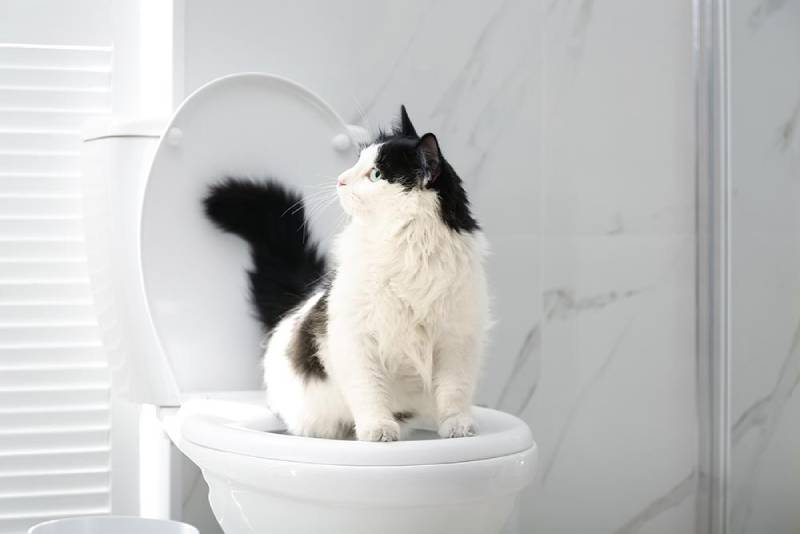Nearly everybody maintains their personal concepts involving Can You Flush Cat Poo or Litter Down the Toilet?.

Intro
As pet cat proprietors, it's important to be mindful of how we dispose of our feline friends' waste. While it might appear practical to flush cat poop down the commode, this practice can have destructive effects for both the atmosphere and human health.
Environmental Impact
Purging feline poop introduces harmful virus and parasites into the supply of water, positioning a significant threat to water communities. These contaminants can adversely affect aquatic life and compromise water quality.
Wellness Risks
Along with environmental worries, flushing feline waste can additionally position wellness risks to human beings. Cat feces might include Toxoplasma gondii, a bloodsucker that can create toxoplasmosis-- a possibly severe disease, especially for expectant females and individuals with weakened immune systems.
Alternatives to Flushing
Luckily, there are more secure and much more accountable methods to take care of cat poop. Consider the following options:
1. Scoop and Dispose in Trash
The most typical technique of taking care of pet cat poop is to scoop it into a naturally degradable bag and throw it in the trash. Make sure to utilize a specialized trash inside story and throw away the waste without delay.
2. Usage Biodegradable Litter
Go with naturally degradable cat trash made from products such as corn or wheat. These clutters are environmentally friendly and can be securely disposed of in the trash.
3. Hide in the Yard
If you have a backyard, consider burying feline waste in a marked location far from vegetable gardens and water sources. Make certain to dig deep adequate to prevent contamination of groundwater.
4. Install a Pet Waste Disposal System
Purchase a family pet garbage disposal system specifically developed for pet cat waste. These systems use enzymes to break down the waste, decreasing odor and environmental effect.
Verdict
Liable pet ownership extends beyond offering food and shelter-- it additionally entails appropriate waste administration. By avoiding purging pet cat poop down the commode and going with different disposal approaches, we can minimize our environmental footprint and secure human health and wellness.
Why Can’t I Flush Cat Poop?
It Spreads a Parasite
Cats are frequently infected with a parasite called toxoplasma gondii. The parasite causes an infection called toxoplasmosis. It is usually harmless to cats. The parasite only uses cat poop as a host for its eggs. Otherwise, the cat’s immune system usually keeps the infection at low enough levels to maintain its own health. But it does not stop the develop of eggs. These eggs are tiny and surprisingly tough. They may survive for a year before they begin to grow. But that’s the problem.
Our wastewater system is not designed to deal with toxoplasmosis eggs. Instead, most eggs will flush from your toilet into sewers and wastewater management plants. After the sewage is treated for many other harmful things in it, it is typically released into local rivers, lakes, or oceans. Here, the toxoplasmosis eggs can find new hosts, including starfish, crabs, otters, and many other wildlife. For many, this is a significant risk to their health. Toxoplasmosis can also end up infecting water sources that are important for agriculture, which means our deer, pigs, and sheep can get infected too.
Is There Risk to Humans?
There can be a risk to human life from flushing cat poop down the toilet. If you do so, the parasites from your cat’s poop can end up in shellfish, game animals, or livestock. If this meat is then served raw or undercooked, the people who eat it can get sick.
In fact, according to the CDC, 40 million people in the United States are infected with toxoplasma gondii. They get it from exposure to infected seafood, or from some kind of cat poop contamination, like drinking from a stream that is contaminated or touching anything that has come into contact with cat poop. That includes just cleaning a cat litter box.
Most people who get infected with these parasites will not develop any symptoms. However, for pregnant women or for those with compromised immune systems, the parasite can cause severe health problems.
How to Handle Cat Poop
The best way to handle cat poop is actually to clean the box more often. The eggs that the parasite sheds will not become active until one to five days after the cat poops. That means that if you clean daily, you’re much less likely to come into direct contact with infectious eggs.
That said, always dispose of cat poop in the garbage and not down the toilet. Wash your hands before and after you clean the litter box, and bring the bag of poop right outside to your garbage bins.
https://trenchlesssolutionsusa.com/why-cant-i-flush-cat-poop/

As a devoted person who reads about Don’t flush cat feces down the toilet, I figured sharing that piece of content was appropriate. Appreciated our blog posting? Please share it. Let somebody else locate it. Kudos for your time. Come back soon.
Services
Comments on “Prevent Clogs and Damage: Don't Flush Cat Poop Down Your Toilet - Expert Insights”